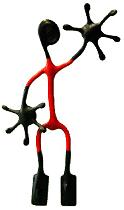Rehabilitation after acute or chronic ankle inversion trauma
Ankle inversion trauma is one of the most frequent occurring lower limb injuries. While most people recover, there remains a high chance of re-injuring the ankle and in some cases, the injury becomes chronic. In this project, we aim to analyse how function, activities and participation change during the rehabilitation process after ankle inversion trauma. In cooperation with the trauma surgeons of the University hospital (UKM), we will gather data from healthy subjects and from subjects suffering from more and less severe acute and chronic ankle inversion trauma. Subjective and objective clinical, physiotherapeutic and movement analysis assessments will be made at the beginning and during the first 12 rehabilitation weeks. Clinical assessments include e.g. ultrasound assessment of foot muscle cross sectional areas to track muscle atrophy or hypertrophy over time. Physiotherapeutic assessments include, among others, joint mobility and functional abilities as one limb stance or jumping. Movement analysis assessments include kinematic and kinetic balance performance during progressive balance tasks.
Unfortunately due to COVID-19, this project has suffered. We were not able to continue with patient measurements in the OpenLab, though we hope to continue in summer 2021. Meanwhile, we have analysed the data of our first pilot subject who suffered from chronic ankle instability. Both his subjective and objective clinical scores have improved after 12 weeks of training. Also, his balance performance has improved as can be seen in the video below, where his one-limb stance with eyes closed at week 0 (start of therapy) is compared to that of week 12.


